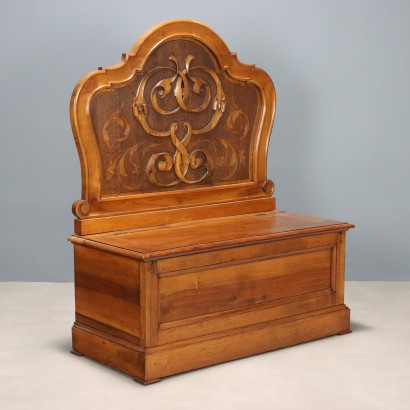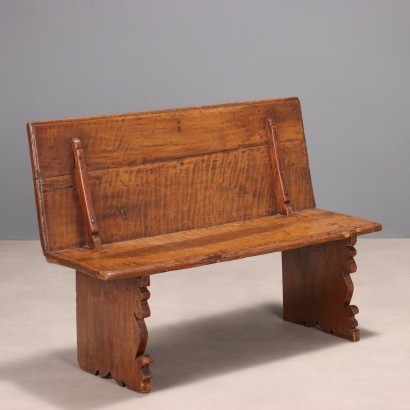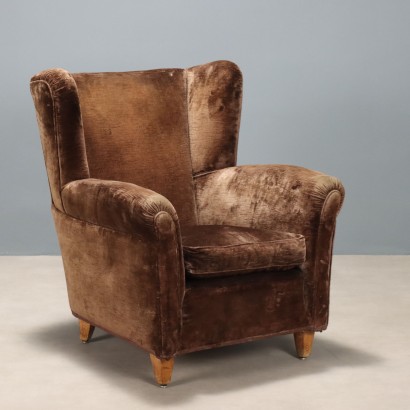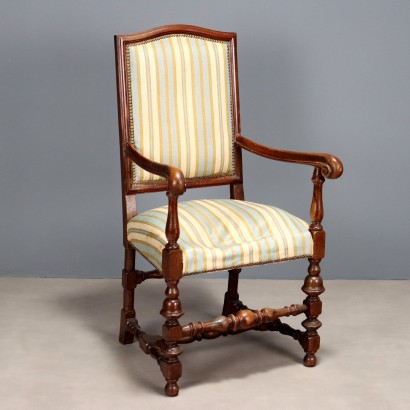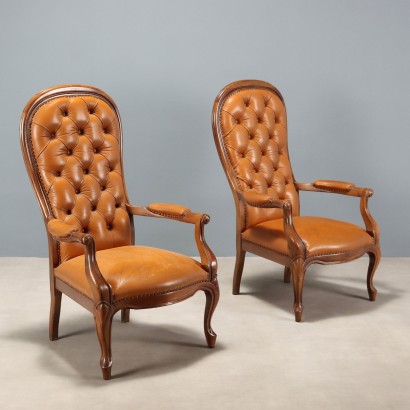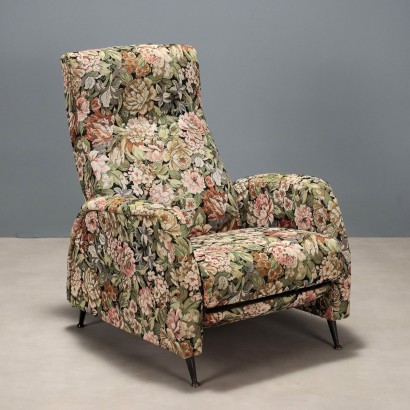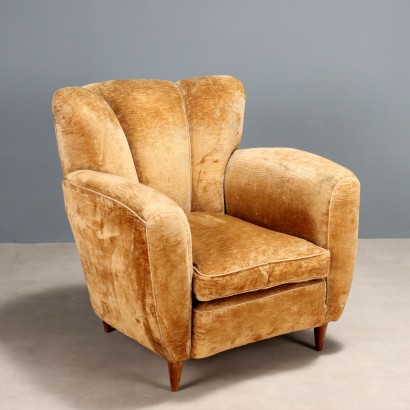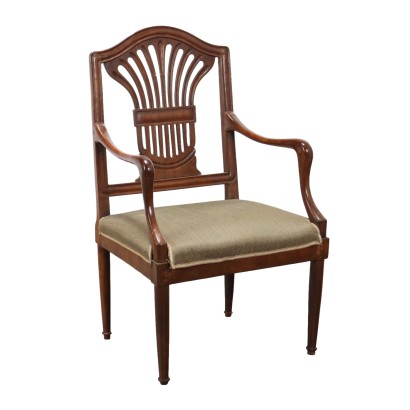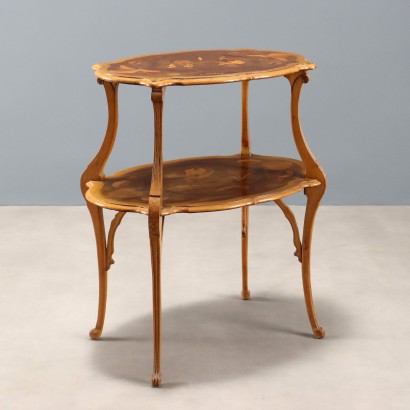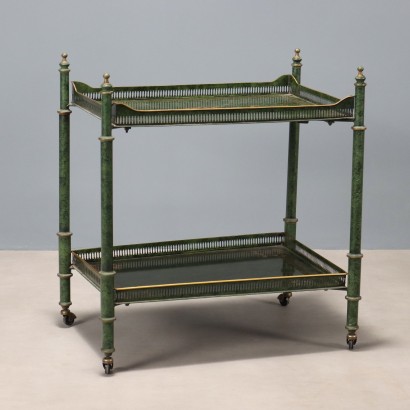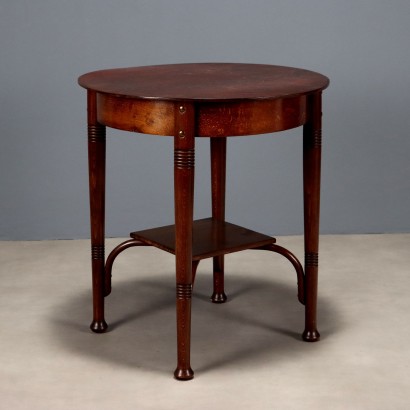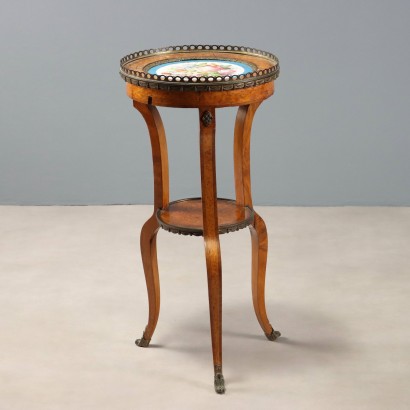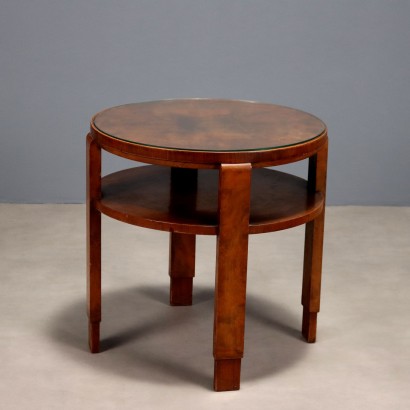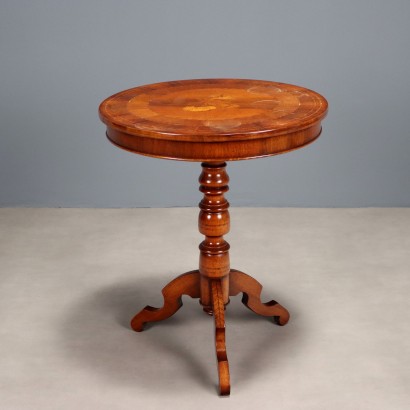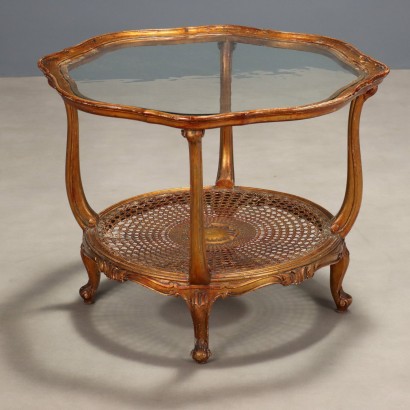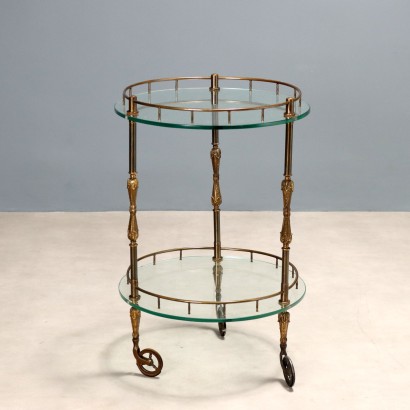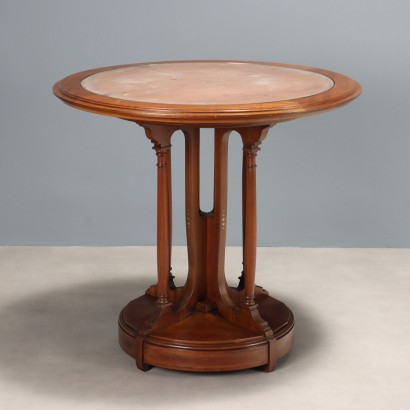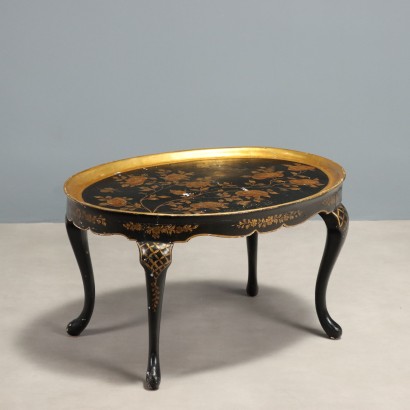Antique Chest Art Nouveau Walnut Openable Seat Italy XX Century - Italy, Early XX Century
Features
Italy, Early XX Century
Style: Art Nouveau (1890-1920)
Age: 20th Century / 1901 - 2000
Origin: Italy
Main essence: Walnut
Description
Walnut chest, paneled back with Art Nouveau scroll carvings, seat with fold-down top. Italy, early 20th century.
Product Condition:
This item requires restoration and polishing due to age and wear. We strive to present the actual condition of the piece as accurately as possible with the photos. If any details are unclear from the photos, the description will prevail.
Dimensions (cm):
Height: 137
Width: 114
Depth: 53
Additional Information
Style: Art Nouveau (1890-1920)
Historical stylistic period formed from the end of the 19th century (ca. 1890) after the Umbertino style and continued until the First World War.The current was characterized by the floral influence and the soft and curved lines, typical example are the "whiplashes".
The first signs of this new era came from architects such as Hector Guimard (1867-1942) who created numerous buildings and hotels, but also from people such as Arthur Mackmurdo furniture designer and Arthur Liberty industrialist and London merchant of the late 19th century who began to produce furnishing fabrics with floral motifs with soft and sinuous shapes.
The Universal Exhibition of Paris in 1900 was an important point for the development and affirmation of Liberty in the following decade.
Liberty was called in different ways depending on the nation, universally known as Art-Nouveau and it is thought that Arthur Liberty is the origin of the name given in Italy to this beautiful stylistic movement.
The name Art-Nouveau is thought to derive from a shop located in Paris called Maison de l'Art Nouveau which began to show off furniture with a new and innovative design in its windows.
With the end of the First World War, the naturalistic period of Liberty ended and the Art-Decò style appeared, with more rigid and geometric lines.
Find out more about the Liberty style with our insights:
Art Nouveau: birth and development of a style
Milan Liberty between flowers and colors
Carlo Zen's Liberty
Decorative shapes and elegance in an Liberty living room
FineArt: Aeolus and Cupid, Liberty sculpture by Luca Madrassi
FineArt: Nymph and Faun, Liberty sculpture by Giuseppe Siccardi
The Austrian taste of Baroque
Age: 20th Century / 1901 - 2000
20th Century / 1901 - 2000Main essence: Walnut
Walnut wood comes from the plant whose botanical name is juglans regia , probably originally from the East but very common in Europe. Light or dark brown in color, it is a hard wood with a beautiful grain, widely used in antique furniture. It was the main essence in Italy throughout the Renaissance and later had a good diffusion in Europe, especially in England, until the advent of mahogany. It was used for solid wood furniture and sometimes carvings and inlays, its only big limitation is that it suffers a lot from woodworm. In France it was widely used more than anything else in the provinces. In the second half of the eighteenth century its use decreased significantly because mahogany and other exotic woods were preferred.Other customers have searched:
Panche, scanno, banchetta, banco, panchina, panca, cassapanca..
Un mix di stili in una panca del XVIII secolo
Panchetto anni '60
Per saperne di più sulle cassapanche, sbricia i nostri approfondimenti su FineArt:
Un importante cassone italiano del XVI secolo
Un cassone pirografato veneto, di fine XVI
Lussuosi bauli Luis Vuitton del 1925
Sull'antiquariato in generale dai un'occhiata anche a:
Classic Monday: da un pezzo dei nostri magazzini alla storia dell'antiquariato
L'antiquariato dalla A alla Z: il Dizionario dell'Antiquariato
Il dizionario dell'antiquariato - Lastronatura
Il dizionario dell'antiquariato - Mascherone
Il dizionario dell'antiquariato - Natura morta
Il dizionario dell'antiquariato - Opificio
Il dizionario dell'antiquariato - Pastiglia
Il dizionario dell'antiquariato - Savonarola
Il dizionario dell'antiquariato - Rosone
Intaglio barocco con motivo a ricciolo
Approfondimenti
Dai un'occhiata anche ai nostri approfondimenti sulle panche antiche, sia sul blog che su FineArt:Un mix di stili in una panca del XVIII secolo
Panchetto anni '60
Per saperne di più sulle cassapanche, sbricia i nostri approfondimenti su FineArt:
Un importante cassone italiano del XVI secolo
Un cassone pirografato veneto, di fine XVI
Lussuosi bauli Luis Vuitton del 1925
Sull'antiquariato in generale dai un'occhiata anche a:
Classic Monday: da un pezzo dei nostri magazzini alla storia dell'antiquariato
L'antiquariato dalla A alla Z: il Dizionario dell'Antiquariato
Il dizionario dell'antiquariato - Lastronatura
Il dizionario dell'antiquariato - Mascherone
Il dizionario dell'antiquariato - Natura morta
Il dizionario dell'antiquariato - Opificio
Il dizionario dell'antiquariato - Pastiglia
Il dizionario dell'antiquariato - Savonarola
Il dizionario dell'antiquariato - Rosone
Intaglio barocco con motivo a ricciolo
Product availability
The product can be seen at Cambiago
Immediate availability
Ready for delivery within 2 working days from ordering the product.
Alternative proposals
It could also interest you

